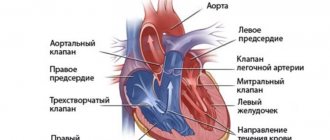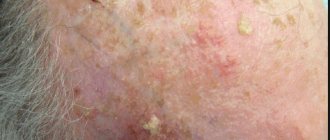Reasons for the development of pathology. Symptoms Possible complications of lymphangioma Diagnosis of pathology and treatment methods
Lymphangioma
or lymphatic malformation - the scientific definition of pathology, is a benign tumor formed in the plexus of lymphatic vessels of connective tissue.
At present, the true causes of the tumor have not been established. There is an opinion among doctors that lymphangioma
is a real benign tumor that develops in the body due to the existing conditions. On the other hand, there is an opinion that the pathology is a congenital malformation of the lymphatic system. The neoplasm consists of cysts of various sizes. The most common manifestation of tumor development are nodes with a diameter of 0.2-0.3 cm. However, in medical practice there are cases of the presence of large formations as a result of malformation of the lymphatic system, which are detected upon visual examination. A benign tumor most often develops in childhood. In some cases, the pathology is a congenital form of the disease.
According to the Ministry of Health, lymphangioma
occurs quite often. Every tenth case from the general picture of the development of tumors in children is associated with a benign neoplasm in the lymphatic system. There is a clear division into primary tumors and secondary neoplasms. The secondary form of tumor growth is observed as a result of infectious diseases suffered by the child and complications arising in connection with this.
Reasons for the development of pathology. Symptoms
It was said earlier that at present there is no clear idea about the reasons for the development of benign neoplasms of the lymphatic system. As a result of examination of patients, it was found that lymphangioma
most often becomes the result of the development of a congenital malformation of the lymphatic system. In some cases, the pathology forms during the prenatal period and begins to develop intensively immediately after the birth of the child. Often, a benign tumor of the lymphatic system develops against the background of other abnormalities of the body. The congenital nature of the pathology, in accordance with the latest scientific developments and guesses of medical scientists, can be influenced by a poor environmental situation for the expectant mother, including exposure to gamma radiation. Other indirect factors influencing the formation of pathology may be poor heredity and complications resulting from severe systemic and infectious diseases suffered by the expectant mother.
The symptoms of the pathology are pronounced. With the development of a tumor at an early age, the child experiences the appearance of compactions in the neck, in the oral cavity, and somewhat less often in the internal organs and in the peritoneum. There are cases of nodules developing in other parts of the patient’s body. The tumor is localized in the subcutaneous fatty tissue. Depending on the symptoms, the following types of pathology are distinguished:
- capillary lymphangioma
; - cavernous lymphangioma
; - cystic lymphangioma
.
Capillary or simple pathologies include neoplasms, the location of which most often is the oral cavity, tongue, and the inner surface of the child’s cheeks. From a clinical point of view, the neoplasms in this case look like swellings measuring 203 cm, soft to the touch and with an unchanged color. There is no pain when palpating the tumors. A detailed analysis can reveal the structure of the seals, consisting of a network of capillaries, a large number of lymphoid cells and connective tissue.
The second type of pathology, cavernous lymphangioma
manifests itself in the form of bubbles on the surface of the skin, the size of which is 2-5 cm. Bubbles, as a rule, appear in the soft subcutaneous tissues in the areas of the largest plexus of the lymphatic system, neck, chest area, on the side of the body, on the arms and legs.
The third type of pathology, cystic lymphangiomas, is much more common in medical practice. Neoplasms develop at the site of the plexus of lymph nodes. Large, spherical formations can occur in the submandibular region, armpits, or in the area of the ears. Unlike the previous two types of pathology, cystic lymphangioma
is characterized by rapid growth, which is caused by the rapid filling of the cyst cavities with fluid. As a result of cyst rupture, abscesses and infection of the body often occur.
A distinctive feature of the first two types of the disease is the ability to stop tumor growth on its own. Regression in tumor development, ending with scarring, is often observed. Detected lymphangioma
in childhood it develops rather slowly, the process of which accelerates during puberty. The reasons explaining such dynamics are not fully understood. There is an opinion among doctors that the activation of tumor growth with the onset of puberty is associated with the impact of the developing secretory system of the body on the state of the lymphatic system.
Symptoms
The nature and severity of lymphangiomas depends on their type, size and location.
Superficially located small tumors are usually only a cosmetic defect. Large formations can become a significant defect in appearance and lead to disruption of the functions of neighboring organs.
Lymphangiomas can be detected in different parts of the body: lips, face, tongue, behind the ears, armpits, mediastinum, abdominal cavity, etc. They are defined as a swelling over which the skin does not change color or becomes bluish (sometimes purple).
As the tumor grows, it compresses the surrounding tissues and the patient experiences corresponding symptoms. For example, if located close to the larynx, a large lymphangioma can cause dysphonia, difficulty breathing, shortness of breath, and swallowing problems.
In most cases, lymphangiomas grow slowly and may regress. Rapid growth of the tumor is caused by injury or infection of the tumor.
When lymphangioma tissue is damaged by infection, the neoplasm becomes dense and increases in size. Inflammation of these tumors occurs especially often in children 3-7 years old. As a rule, such complications occur in the fall or spring. They are caused by ARVI, tonsillitis, pulpitis, periodontitis, inflammatory processes in the intestines, stomach, or functional disorders of the digestive system.
The patient's temperature rises and signs of intoxication caused by suppuration appear (weakness, loss of appetite, etc.). The skin over the tumor turns red, and touching the tumor causes pain. Bleeding or lymphorrhea may occur due to injury. Attempts to puncture and evacuate the purulent contents of lymphangiomas do not always lead to the elimination of suppuration, since not all tumor cavities can be drained, and the inflammatory process can recur. In such cases, only surgical removal of the tumor helps to eliminate repeated suppuration.
Possible complications with lymphangioma
Despite its benign nature, lymphangioma
poses a serious danger to the body. The main danger is due to the threat to the body during childbirth, both for the mother and for the unborn child. The pathology poses a danger not only to newborns, but also to adolescent children, causing serious harm to their health. Neoplasms that arise in the fetus create difficulties for the woman in labor during the passage of the fetus through the birth canal. Often there is compression of neighboring organs, displacement of tissues, causing congenital hypoxia and coronary heart disease and other organs in the newborn.
Lymphangioma that appeared after birth in a newborn
, gives every reason to suspect that the child has serious impairments in the functionality of vital organs. Over time, complete loss of functionality of individual organs may occur. Based on the fact that the defect during birth affects organs in the head and neck area, the newborn may have problems with the respiratory process and make it difficult to swallow.
The most common complication resulting from developing pathology is lymphatic malformation, formed as a result of any inflammatory process. Complications can arise as a result of otitis media, acute respiratory viral infections, respiratory diseases, and lymphadenitis. One of the severe complications, the likelihood of which increases as a result of the development of a benign tumor in the lymphatic system, is the leakage of lymph into the chest and peritoneum, which poses a threat to the patient’s life.
Treatment
The basis of treatment is surgical intervention.
The main method of treating lymphangiomas is their surgical removal. Radiation and chemotherapy for such tumors are ineffective and can be performed in a generalized process.
For inflammation of lymphangiomas, the patient is prescribed drug therapy:
- broad-spectrum antibiotics (in the form of injections, tablets and ointments);
- nonsteroidal anti-inflammatory drugs (indomethacin, ibuprofen, diclofenac);
- desensitizing agents (Tavegil, Zirtek, Cetrin, etc.);
- detoxification therapy (intravenous infusion of Reopoliglucin, glucose and sodium chloride solution, Hemodez);
- restoratives (multivitamins, biostimulants, adaptogens, neuroprotectors).
Surgical operations to remove lymphangitis in children are usually performed after 6 months. Indications for intervention are the following cases:
- dangerous location of the tumor;
- rapid progression of the tumor, outpacing the child’s growth;
- branched lymphangiomas that are not prone to regression;
- worsening the quality of life of a tumor patient.
Previously performed classical operations to remove lymphangiomas were very often complicated by lymphorrhea and suppuration. That is why surgeons constantly worked to develop new techniques. Now, when removing these tumors, preference is given to minimally invasive methods and interventions, which are carried out using radioknife, laser exposure, electrocoagulation, cryotherapy, sclerotherapy and microwave hyperthermia.
Various surgical techniques are used to remove lymphangiomas, and the choice of one or another method depends on the clinical case. For small tumors, sclerotherapy can be performed, which involves the introduction of drugs into the tumor cavity that cause “sealing” of the vessel cavity and the formation of connective tissue in the area of formation. Subsequently, such patients may need additional surgery to remove the scars that have formed at the site of the tumor. Cavernous lymphangiomas are removed using microwave hyperthermia, which causes heating and subsequent sclerosis of the neoplasm tissue.
In some European clinics, the drug Picibanil (OK-432) is used to remove lymphangiomas, which is injected into the tumor and causes a reduction in its size. Several injections may be performed to achieve the desired result. This technique is minimally invasive, safe and does not require long-term hospitalization.
FIBROHISTIOCYTIC TUMORS AND TUMOR-LIKE LESIONS
Xanthoma
A rare disease, most often localized in the skin. Occurs in people with impaired lipid metabolism, usually multiple. Also localized in tendons. Presented by small nodules, partly of the xanthelasma type.
Juvenile xanthogranuloma
A small nodule in the dermis or subcutaneous tissue. Disappears spontaneously.
Fibrous histiocytoma
It is more common in middle age and is localized mainly on the lower extremities. Usually has the shape of a dense knot up to 10 cm, grows slowly. After surgical removal, recurrences are rare.
Which doctor should I contact?
If swelling of the skin appears, blisters with bloody or serous contents appear, changes in skin color to purple or bluish, or facial asymmetries, you should consult a pediatrician or therapist. After examination (ultrasound, CT, MRI, x-ray lymphography), the patient is recommended to consult a vascular surgeon or oncologist.
Lymphangioma is a benign tumor and begins to grow from the tissues of the lymphatic vessels. These neoplasms are often congenital and are detected in children in the first year of life. Sometimes they occur in adults. Treatment of lymphangiomas is carried out surgically. The method of tumor removal is determined by the clinical case.
Oncologist A.L. Pylev talks about lymphangioma in the “Tablet” program:
Signs of the disease
Cavernous angioma of the brain treatment and diagnosis
Lymphangioma is a benign type of tumor. Symptoms appear according to the location of the nodule, size and type. With skin lymphangioma, the only symptom is an aesthetic defect. Sometimes a large tumor can put pressure on neighboring organs and cause disruption.
Symptoms of lymphangioma of the larynx and retropharyngeal organ are as follows: breathing problems (shortness of breath and difficulty breathing), voice changes, and it hurts to swallow.
Lymphangioma of the orbit is determined by signs of swelling and characteristic thickening in the eyelid area; closure of the orbit of the eye may be present; the eyelids acquire a bluish tint. The conjunctivae of the eye, affected by nodules, burst and bleed.
Lymphangioma of the eye
When enlarged, the cheek tumor begins to protrude above the skin and changes color to bluish. The cutaneous pattern acquires a vascular sign and becomes covered with characteristic vesicles. The subcutaneous tissue undergoes sclerosis. As it develops, fibrous dysplasia of the right or left side of the face is observed.
Damage to the tongue is manifested by muscle damage and macroglossia - swelling of the organ and thickening. The tongue falls out of the mouth - there is no way to put it inside. Serious disturbances in speaking, breathing and taste reflexes are recorded. The organ becomes covered with microscopic ulcers and bleeding.
The neoplasm on the upper lip looks outwardly like a small swelling at an early stage of development. When enlarged, it spreads to the nasolabial groove and provokes lip enlargement. As it progresses, exudate is released from the vesicles.
The cervical tumor has a cavernous form of development with a soft consistency. There are no clear boundaries, the shapes are blurry. The neoplasm protrudes above the skin and causes various disorders of neighboring tissues.
Pathology in the brain area causes serious disorders - epileptic seizures, sclerosing muscle paralysis, tremors, extraneous tinnitus, loss of vision and coordination.
Abdominal disease has an acute symptom in children: pain in the retroperitoneal space is manifested by noticeable deformation, the tumor does not move and has a dense consistency.
With rapid growth, the neoplasm is often injured, which is dangerous due to foreign infection. Infection of lymphangioma leads to complications. This condition occurs in children between 3 and 7 years of age. Body temperature rises to 39-40 degrees with signs of intoxication of the body. The tumor site acquires a reddish, inflamed hue and begins to hurt. Sometimes there is bleeding from the diseased nodule. The period of inflammation lasts up to 3 weeks. After this, everything takes on its original form. Complications include suppuration of the node and breathing problems. Drainage of pus is required. If there is no positive effect, the doctor will refer you for surgical removal.
Lymphangioma and hemangioma are similar in appearance and formation process. But it is more difficult to cure lymphangioma - it does not go away on its own.
BENIGN TUMORS OF MUSCLE TISSUE
Tumors of muscle tissue are divided into smooth muscle tumors - leiomyomas, and striated muscle tumors - rhabdomyomas. Tumors are quite rare.
Leiomyoma
Mature benign tumor. Occurs at any age in both sexes. It is often multiple. The tumor can become malignant. Treatment is surgical.
Leiomyoma, developing from the muscular wall of small vessels - small, often multiple, poorly demarcated and slowly growing nodes, often with ulcerated skin, is clinically very similar to Kaposi's sarcoma.
Genital leiomyoma is formed from the muscular lining of the scrotum, labia majora, perineum, and nipples of the mammary gland. May be multiple. Cellular polymorphism is often observed in the tumor. Hormone dependent. Treatment is surgical.
Angioleiomyoma from the trailing arteries
Clinically, a sharply painful tumor that can change size under external influences or emotions. The sizes are usually small, more often found in older people, on the limbs, near the joints. It is characterized by slow growth and a benign course.
Rhabdomyoma
A rare mature benign tumor based on striated muscle tissue. Affects the heart and soft tissues. It is a moderately dense node with clear boundaries, encapsulated. Metastases of rhabdomyoma have not been described. Relapses are extremely rare. Microscopically, 3 subtypes are distinguished - myxoid, fetal cell and adult. Rhabdomyoma of the female genitalia is also distinguished. The adult type mainly recurs.











